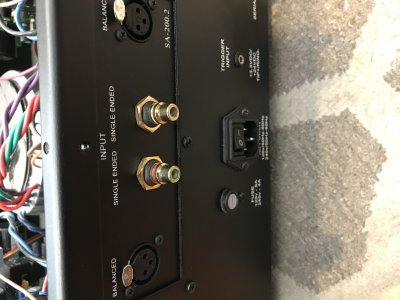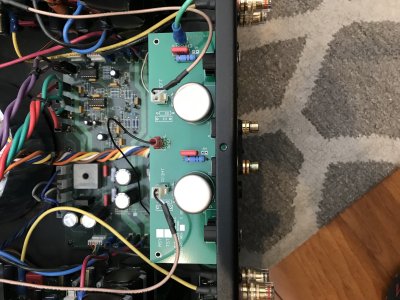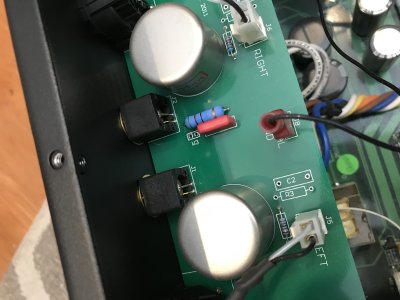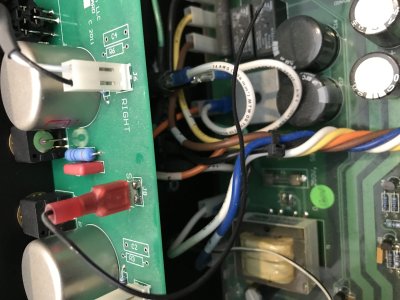I have a Cary SA 200.2. I have had it for many years but haven't used it much as it has a vicious 120 Hz buzz in both channels. Disconnecting the inputs does not help and it does not change with the volume control on a preamp. I thought about pairing it with a BP2, but it is not great candidate for that as it's input impedance is 22K. Despite the buzz, it is an otherwise nice sounding amp, runs very cool and is built like a brick Sh......., well, you know. I took it apart today to investigate the problem and found: The input jacks, both Single Ended and Balanced, are mounted on a PC Board which is located right above the IEC power inlet. There is not a switch to choose between input type, so both sets are simultaneously live. It is a simple board and the parallel traces from the input jacks pass right over the 120V input, about 2 inches above that power input. Is this the most likely source of my buzz?
Would a 3-sided Iron shield covering this board (above,below and on the side) help to shield this noise from the inputs. If so, what gauge steel should I use? I figure that I can screw it to the chassis to secure and ground it, but it will take some effort to make. I included some photos.
Jamie
Would a 3-sided Iron shield covering this board (above,below and on the side) help to shield this noise from the inputs. If so, what gauge steel should I use? I figure that I can screw it to the chassis to secure and ground it, but it will take some effort to make. I included some photos.
Jamie




